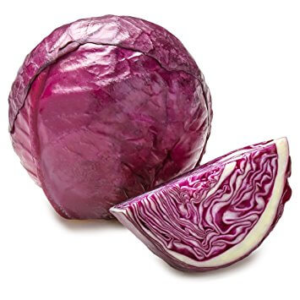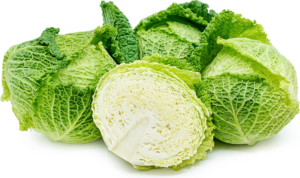“Pray for miracles, but plant cabbages.” — Ken Follett
There are a number of types of cabbage. The four most commonly grown in our garden are green cabbage, red cabbage, savoy cabbage and bok choy, or Chinese cabbage. The growing of bok choy is different from the other three, so that will be on a separate page.






Savoy cabbage is identified by its crinkly leaves.
Benefits and nutritional information:
- Cabbage is a low calorie, high fiber vegetable with an impressive nutrient pro-file. It is rich in vitamins, micronutrients, and antioxidants; cancer-fighting flavonoids and phytonutrients which fight inflammation and arthritis.
- Red cabbage is especially nutritious, containing ten times as many vitamins as green cabbage.
Starting:
- Early season cabbage is planted from starts.
- For a fall harvest, direct sow seeds outdoors in mid- to late summer.
When to plant:
- Cabbage planted in the spring should be set out early enough to allow it to mature before the heat of summer (75 days for green or red cabbage; 85 days for Savoy cabbage).
- Late cabbage must be started during the heat of summer, but develops its main head during the cool weather of fall.
Thinning, training
-
Space plants 12 to 24 inches apart. The closer the spacing, the smaller the heads.
Signs of over-watering, nutrient deficiency
- Overwatered cabbage are prone to blackleg and black rot diseases. These cause plants to become stunted, turn yellow and die. Black leg results in black cankers on the stem and a rotted tap root. Black rot causes large, V- shaped, yellow-brown areas starting from the leaf edge.
- Cabbage needs nitrogen in its early growing stages. Ideally it should get a balanced fertilizer 2 weeks after transplanting and then a nitrogen-rich fertilizer 3 weeks later.
Pests and pest controls
- Crop rotation: For optimum pest control, brassicas should not be planted in the same area more frequently than every third year.
- Practice good sanitation. Remove and destroy or compost all leftover vegetation to keep bacteria, fungus, harmful nematodes and insects from becoming established in the soil.
- Carefully examine plant starts. Don’t use any that are wilted, discolored, or have black spots on stems or leaves.
- Common insect pests of cabbage are aphids, cutworms, cabbage loopers, cabbage caterpillars and flea beetles.
Harvesting
- Cabbage can be harvested anytime after the heads form. It’s important to harvest them before they begin to develop cracks (from absorbing too much water) and expose the inner tissues.
- If early cabbage is harvested with a cut close to the lower surface of the head, the remaining stump can allow sprouts to develop. These can yield a later crop of cabbage.
- Otherwise, remove all stumps and roots immediately after harvest to destroy pest breeding grounds.
Other resources and articles
- Many people object to the smell of cabbage cooking. That’s not the fault of the cabbage, but of the cook. The objectionable smell comes from overcooking that breaks down the isothiocynates into various sulfur compounds. To prevent this, cabbage should be cooked only long enough to be tender. The reaction is also reduced by using stainless steel pots and pans for cooking since aluminum pans increase the release of sulfur compounds.
